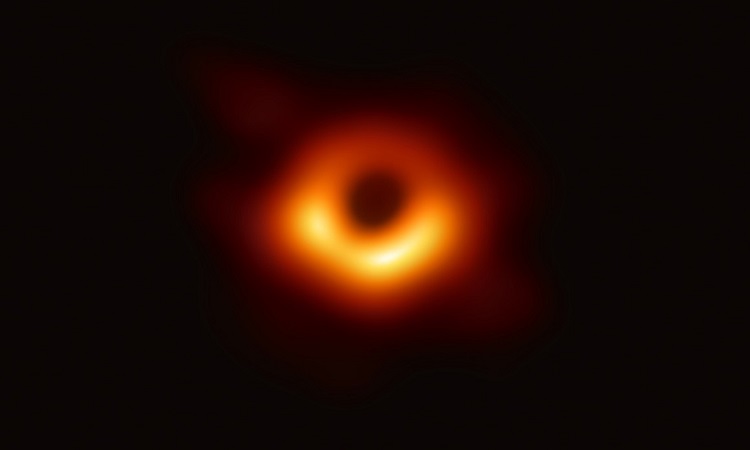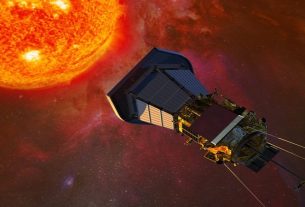A team of astronomers announces they have identified a black hole that obviously has an appetite. Repeated X-ray “flashes” suggest that the cosmic ogre feeds at least three times a day.
All nutritionists will tell you: it is not advisable to skip meals. A supermassive black hole, spotted in the center of a galaxy 250 million light-years away, seems to have understood the lesson. Follow-up studies by NASA’s Chandra telescopes and ESA’s XMM-Newton suggest that the object, about 400,000 times heavier than the Sun, feeds at least three times a day. This type of behavior had already been observed in some small black holes (10 times the mass of the Sun), but never in a supermassive black hole. The details of the study are published in the journal Nature.
4 moons, 3 times a day
It was the XMM-Newton space telescope that spotted the object first, last December. Follow-up analyzes on January 16 and 17, then revealed five explosions at regular intervals. Chandra, on the other hand, spotted at least three more on February 14th. All were betrayed by “flashes” X-rays, spaced each time about 9 hours. It was also revealed that each explosion made the black hole 20 times brighter. The temperature of the gas snapped up by the object also increased. From a little over 500 000 C ° during quiet periods to more than 1.3 million C ° during hostilities.
And the least we can say is that this black hole seems to eat its fill. Given all these records, the researchers estimate that the object engulfed the equivalent of four moons three times a day.
A still-mysterious origin
If it is indeed established that this black hole is greedy, the source of all this gas has not yet been identified. It happens that black holes siphon the matter of surrounding stars, passed a little too close. But usually, these events produce punctual X-ray flashes. And not repetitive. “This is a completely different story here, the origin of which will have to be studied with additional data and new theoretical models,” says Margherita Giustini of ESA and co-author of the study.
The advantage of this supermassive black hole is that it weighs only 400,000 solar masses. Indeed, the more these objects are heavy and the brightness fluctuations are slow. In other words, with a black hole billions of times more massive than the Sun, these flashes of X-rays would be repeated every few months. See you every few years. The fact that it is here rather “light” makes it possible to record closer fluctuations (every 9 hours). This greatly facilitates follow-up operations.

Email: mary@satprwire.com Phone: +44 20 4732 1986
Marry is a fitness freak in every manner and gives proper care about her health and of others. She is probably the best person we have at Daily Research News for covering articles from the Health sector. If not at work, she can be seen drinking a cup of coffee.



